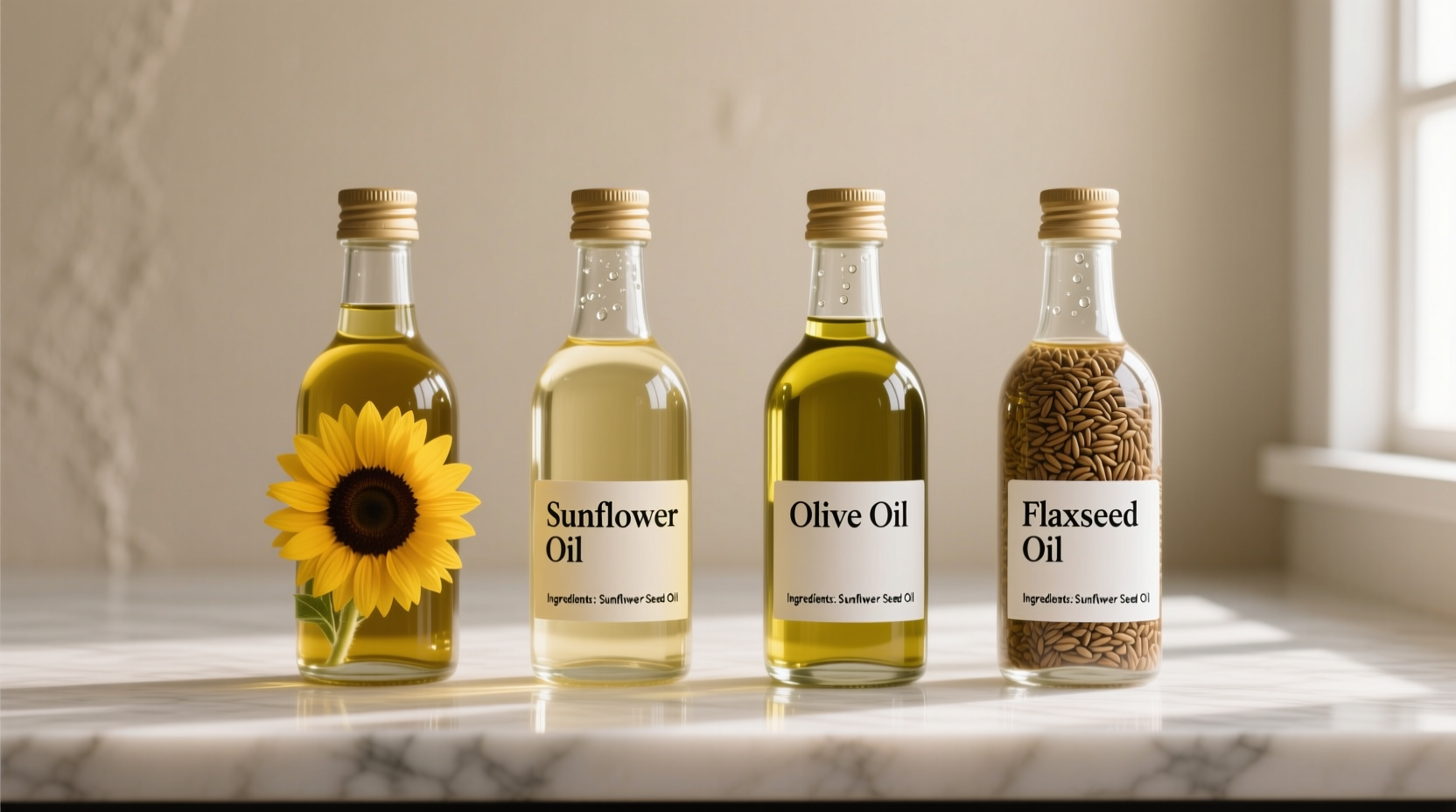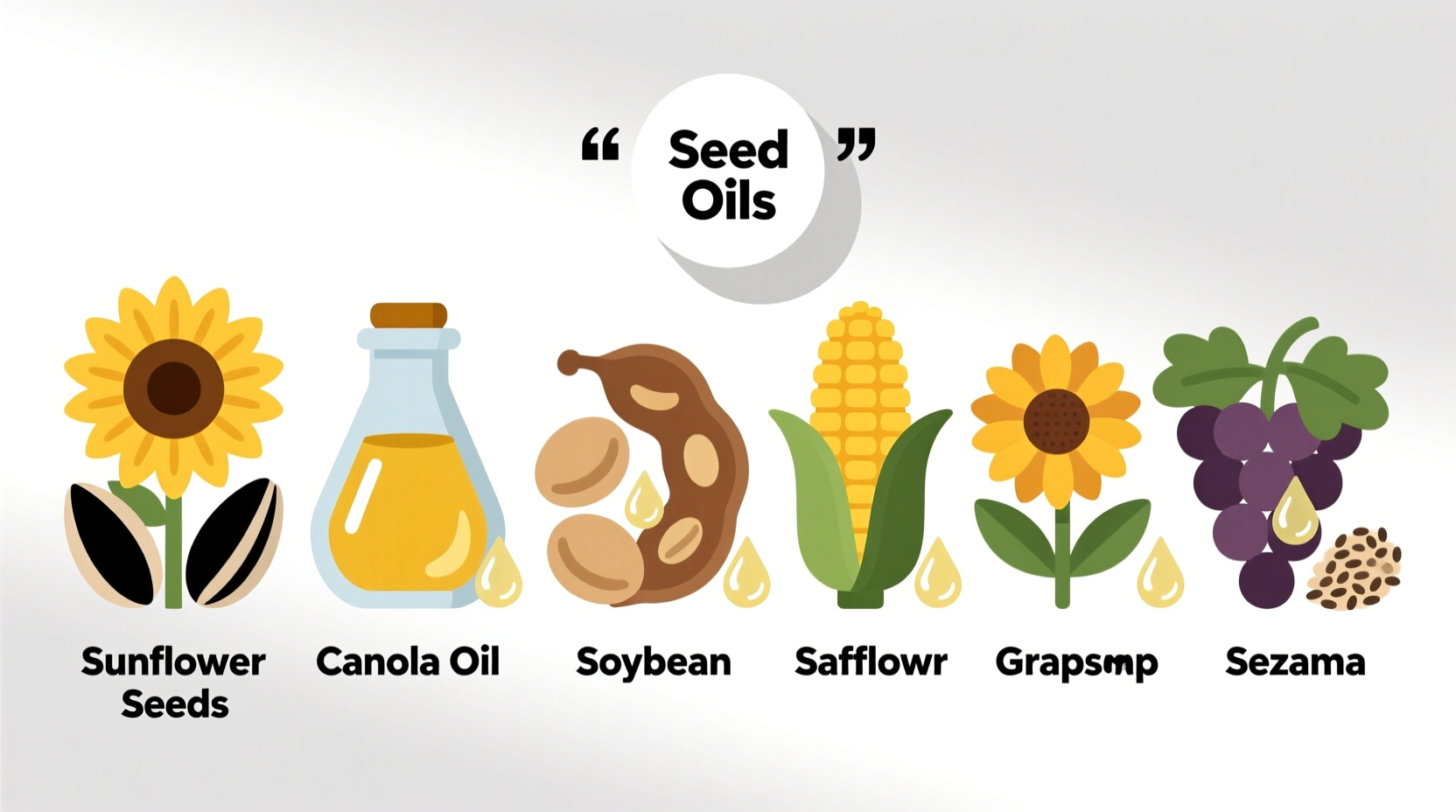Understanding Seed Oils in Your Food
When you're checking food labels or making grocery choices, knowing which products typically contain seed oils can help you make more informed decisions. These oils have become ubiquitous in modern food production due to their affordability, long shelf life, and neutral taste profile.
What Exactly Are Seed Oils?
Seed oils are vegetable oils extracted from seeds rather than fruits (like olive oil). The most common varieties include:
- Soybean oil (the most widely used)
- Canola oil (from rapeseed)
- Corn oil
- Sunflower oil
- Safflower oil
- Cottonseed oil
These oils became popular in food manufacturing during the mid-20th century as processing technology improved and demand for inexpensive cooking fats increased. According to USDA Economic Research Service data, soybean oil consumption in the United States grew from approximately 2 pounds per person annually in 1970 to over 25 pounds by 2020.
Everyday Foods That Typically Contain Seed Oils
| Food Category | Common Products | Most Likely Seed Oils |
|---|---|---|
| Processed Snacks | Chips, crackers, pretzels | Soybean, corn, sunflower |
| Fried Foods | French fries, fried chicken, onion rings | Canola, soybean, cottonseed |
| Salad Dressings | Bottled vinaigrettes, creamy dressings | Soybean, canola, sunflower |
| Baked Goods | Cookies, cakes, pastries | Soybean, canola, palm |
| Fast Food | Burgers, sandwiches, fried items | Soybean, canola, corn |
| Breakfast Foods | Granola bars, toaster pastries, cereals | Soybean, canola, sunflower |
How Seed Oils Became Dominant in Our Food Supply
The adoption of seed oils followed a clear timeline driven by economic and technological factors:
- 1930s-1940s: Industrial processing methods improved, making seed oil extraction more efficient
- 1950s-1960s: Marketing campaigns positioned seed oils as "heart-healthy" alternatives to saturated fats
- 1970s-1980s: Government dietary guidelines began recommending vegetable oils over animal fats
- 1990s-present: Genetic modification increased crop yields, further reducing costs
According to historical data from the USDA, the percentage of calories from seed oils in the average American diet has increased from less than 1% in 1900 to approximately 8% today. This dramatic shift occurred as food manufacturers sought affordable, stable fats for mass production.
Reading Labels to Spot Seed Oils
Seed oils often appear under various names on ingredient lists. Here's what to look for:
- "Vegetable oil" (typically soybean or canola)
- "Partially hydrogenated" oils (indicates trans fats)
- Specific oil names like "soybean oil" or "canola oil"
- "High oleic" versions (a modified form)
When shopping, remember that "non-GMO" or "organic" labels don't necessarily mean a product is free from seed oils. Always check the full ingredient list for specific oil types.

Practical Considerations When Avoiding Seed Oils
While some health-conscious consumers choose to limit seed oils, it's important to understand the context:
- Seed oils are not inherently harmful when consumed in moderation as part of a balanced diet
- The American Heart Association still recommends vegetable oils over saturated fats for heart health
- Complete avoidance requires significant label reading and meal preparation
- Many "healthier" alternatives like avocado or olive oil are significantly more expensive
For those looking to reduce seed oil consumption, focus first on eliminating fried restaurant foods and highly processed snacks, which typically contain the highest amounts. Cooking at home with alternative fats like olive oil, avocado oil, or coconut oil provides more control over what you consume.
Smart Swaps for Common Seed Oil-Containing Foods
You don't need to eliminate all processed foods to reduce seed oil intake. Try these practical alternatives:
- Replace bottled salad dressings with homemade versions using olive oil
- Choose air-popped popcorn instead of packaged microwave varieties
- Opt for plain nuts and seeds rather than roasted, flavored varieties
- Select whole-grain crackers made with olive oil instead of vegetable oil
- Make your own granola bars using coconut oil instead of store-bought options
Final Thoughts on Seed Oils in Your Diet
Understanding which foods contain seed oils empowers you to make informed choices based on your personal health goals and dietary preferences. Rather than focusing on eliminating all seed oils, consider adopting a balanced approach that emphasizes whole foods while being mindful of processed food consumption. The key is awareness and moderation, allowing you to enjoy a varied diet while making conscious choices about your fat intake.











 浙公网安备
33010002000092号
浙公网安备
33010002000092号 浙B2-20120091-4
浙B2-20120091-4